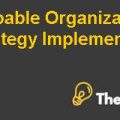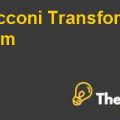
Question No. (a) i:
What is the EVPI (expected value of perfect information) when the information concerns whether project B will be completed on time or not?
Answer:
EXPECTED VALUE OF PERFECT INFORMATION:
In decision making theory, the expected value of perfect information (EVPI) is the price that the decision maker would be willing to forgo in order to gain access to perfect information.
The expected value of information is the variance between the expected value with perfect information available and the expected value with current information. The estimated or expected value of perfect information is the maximum amount a decision maker is willing to pay for additional information that gives a perfect knowledge as to the state of nature. In other words, EVPI (expected value of perfect information) is a difference between the expected value of perfect information and the expected value of imperfect information.
The Expected value of perfect information is $360,000, stating that this amount is doubtful on the condition of timely completion or otherwise. Meaning that the company will have to bear $2millions to obtain perfect information, whether the project is going to complete on time or vice versa.
Question No. (a) ii:
What should Mr. Abbot do? Use a decision tree to determine that.
Answer:
1. The probability of the completion of project B in time is 60%.
2. The probability of the completion after the time is 40%.
3. If the result of expending $100,000 on the experiment is favorable, then the chances of project B completion will increase to 80%.
4. If the result of expending $100,000 on experiment is unfavorable, then the chances of project B’s completion will decrease to 20%.
Based on the Decision Tree, Mr. Abbot should go for the Project B, since the chances of completion on time is higher which will generate higher returns.
Question No. (b):
Mr. Abbot looks at the analysis in (a) and realizes that it ignored the cost of lost reputation when project B is completed late. He is hesitant to specify a dollar figure for this cost, but would like to understand how the EMV of each decision option depends on this cost. Develop a diagram using Precision Tree to satisfy Mr. Abbot and clearly state the optimal decision.
Answer:
EMV is the total of the weighted payoffs as probable outcomes related to a single decision. The weights relate to the likelihood i.e. probabilities, of various events generating the possible payoff. Statistically, this is the product of an event’s chances of existence and the gain or loss that will result. In simple words, EMV is the average of best and worst scenarios. After careful analysis of the (a) above, it can be assumed that whenever the cost of loss in reputation occurs, it’ll definitely effect the decision of the project manager. A positive EMV indicates an opportunity and on the other hand a negative EMV shows threat.
Question (c):
(c) Suppose that the cost of lost reputation is $10 million.
(i) What should Mr. Abbot do?
Answer:
Since, the cost of lost reputation incurred, Mr. Abbot should not go for the project B, as in case of non-completion of project on time, though the chances were low but the cost of lost reputation was very high.
(ii) What is the EVPI when the information concerns whether project B will be completed on time or not?
Answer:
The Expected or estimated value of perfect information is $2,000,000, stating that this amount is doubtful on the condition of timely completion or otherwise. Meaning that the company will have to bear $2millions to obtain perfect information whether the project is going to complete on time or vice versa.
(iii) What is the EVSI (expected value of sample information) where the sample information is the information provided by the experiment?
Answer:
The expected or estimated value of sample information (EVSI) is the additional expected profit possible through knowledge of the sample or survey information. Expected value of Sample Information can be calculated as:
EVSI = expected value of best decision with sample information minus expected value of best decision without sample information....................
This is just a sample partial case solution. Please place the order on the website to order your own originally done case solution.













